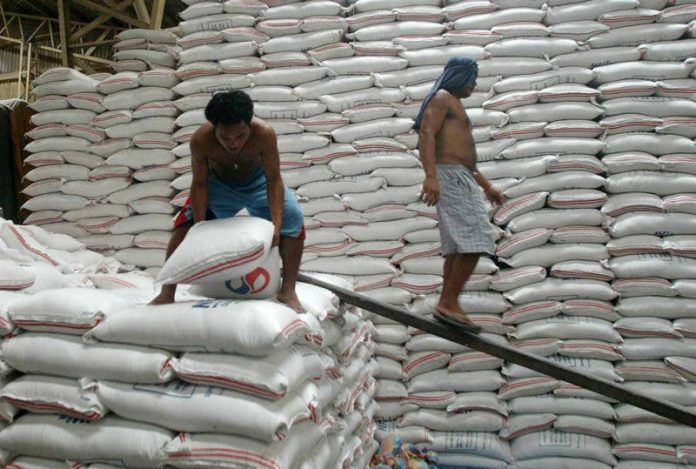
The Department of Agriculture (DA) assured the public that it is on track to achieve a higher level of rice adequacy despite the disruptions caused by recent natural disasters and logistical roadblocks brought about by the coronavirus disease 2019 (Covid-19) pandemic.
During the recent 2019 Rice Achievers Awards in Quezon City, Agriculture Secretary William Dar said that while the pandemic had a minimal impact on the country’s rice production, the damage [wreaked by] a series of typhoons pushed back the DA’s earlier rice adequacy target of 93 percent.
“Due to a series of typhoons, we lost about 322,041 tons (MT) of palay (unmilled rice), which is roughly equivalent to an eight-day rice supply. Hence, our adequacy level is about 90 to 91 percent,” Dar was quoted as saying in a statement on Thursday.
“However, rest assured we have enough rice by the end of December 2020, equivalent to three months’ [worth of] supply,” he added.
The DA had targeted to produce 20.34 million MT of palay, 8 percent more than the 18.8 million MT of the staple harvested in 2019.
“The rice sector has been doing well amid the pandemic. For the first three quarters, rice production reached 11.9 million MT, exceeding initial expectations. But then, the typhoons hit, affecting our major rice producing provinces,” Dar said.
According to Andrew Villacorta, DA national rice program lead assistant secretary, rice production is expected to reach 7.42 million MT in the fourth quarter. Once reached, total output would be 19.32 million MT, 2.7 percent higher than the 2019 figure.
For 2021, Dar said his department aimed for palay output to hit 20.48 million MT.
To achieve this, he said the DA would optimize the use of both quality inbred and hybrid seeds for rainfed and irrigated areas nationwide, and improve efficiency in the allocation and distribution of the P10-billion Rice Competitiveness Enhancement Fund (RCEF) for farm machinery, inbred rice seeds, credit, training and extension.
The department will also intensify the promotion of climate resiliency programs among rice farmers to reduce crop losses during typhoons, he added.
“My vision is to see productive, globally-competitive and resilient agriculture, where Filipino farmers prosper. This has been my battle cry, and we will do what it takes to make this vision a reality soon,” Dar said.

